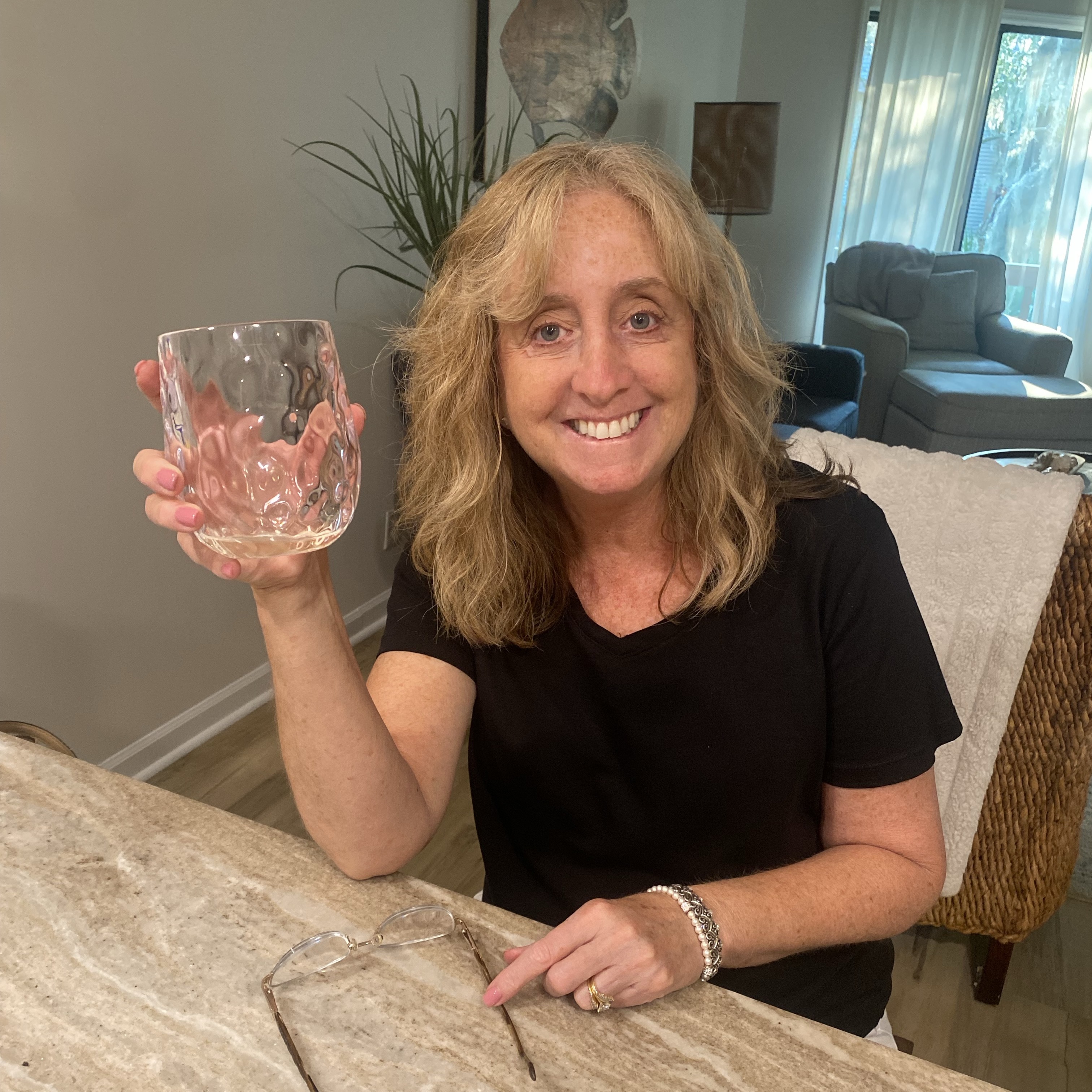Pome On The Range
Craggy Range
Calvert Vineyard Pinot Noir 2014
Spicy dark cherry, plum fruit with notes of wet leaves, tobacco, earthiness, vanilla hint and long finish. A lot going on but a pleasure and party in the mouth. — 8 years ago
Miner Family
Garys' Vineyard Pinot Noir 2013
Founded in 1988 by Dave Miner along with his wife Emily and his parents, Ed and Norma, producing small lot, handcrafted wines. Fruit from a 50 acre vineyard was planted in 1995 along the terraces of the Santa Lucia mountain range, overlooking the Salinas River Valley. Light Ruby with aromas of red fruits and spice. On the palate cherry, raspberry with smoky oak flavors. Rich tannins are well balanced on a lingering finish ending with soft earthy mineral tones. — 8 years ago
Craggy Range
Gimblett Gravels Vineyard Syrah 2015
Nose of ripe; blackberries, blueberries, black plum, black raspberries, dark cherries, white & black pepper, soft, chalky minerals with light & dark fresh florals. On the palate, lean; blueberries, black raspberries, dark cherries, cherries, black licorice, soft baking spices; clove, cinnamon, nutmeg, powdery crushed rocks, leather, dry & fresh dark florals with understated white & black pepper. Photos of parts of the soil structure in the Gimblett Gravels and vines around their Cellar Door. — 9 years ago
Craggy Range
Sophia Gimblett Gravels Red Bordeaux Blend 2010
Bordeaux blend from a quality Hawke's Bay producer. Good time to open a 2010 but it still has another 5-10 years of good life ahead. Nose of blackberries, blueberries, black raspberries, black plum, dark cherries and strawberries...they are in a preserves style, dry fresh & dry florals with black licorice. The fruits on the nose match the palate and are ruby ripe. Touch of black tea, black licorice, soft baking spices; cinnamon & vanilla, soft understated leather, rich turned black earth, dry stones, fresh violets, lavender & nice mellow acidity. The structure, length, balance and tension have developed nicely in the bottle. The long finish is fresh, lush, rich fruits with light earthiness. It would warrant a higher score if it had a little more complexity. Still an enjoyable wine. @ Mangapapa with a real Picasso in the photo. — 9 years ago

Albert Boxler
Grand Cru Sommerberg Vendanges Tardives Riesling
Slightly low acid for Riesling, but it glows from an almost excruciating level of mineral energy. Slight botrytis, well-integrated with petrol and a range of lower-intensity florals. Light on its feet. ~40g/l RS and tastes like it. — 10 years ago
Lioco
Sonoma County Chardonnay 2014
Good price point and expression of citrus, medium bodied pleasant grouch range slight find bitterness on the end — 10 years ago
Craggy Range
Single Vineyard Sauvignon Blanc 2014
Wonderful citrus profile. Mineral notes on the nose. Great with the seafood dishes we ordered. Will order again. — 10 years ago
Craggy Range
Aroha Te Muna Pinot Noir 2006
Domaine Drouhin
Dundee Hills Pinot Noir 2015
Very elegant, linear, focused and bright. Aromatics came on gradually and eventually showed excellent freshness and a floral dimension. Medium palate weight, good depth and core on the first night showing a decidedly high-toned, crunchy cherry and cranberry personality. Some sandalwood and crushed rock minerality going on as well. Firm tannins and solid structure. Threw a fair amount of sediment at the end and seemed a bit wilted on the second night. Despite that disappointment, this is certainly a fine Pinot Noir from an excellent vintage. It speaks of its place, shows restraint and balance and is an honest wine that isn’t trying to do too much. Good benchmark for quality in this price range if you’re looking for elegance and Burgundian character. — 8 years ago
Craggy Range
Te Kahu Gimblett Gravels Vineyard Merlot Blend
Very good wine, better after opening up. Would get again. Found this a bit on the sour side but bf liked it very much. — 8 years ago
Domaine du Grand Tinel
Alexis Establet Châteauneuf-du-Pape Grenache 2012
Popped and poured. This is in a much more fun spot than last year. The nose is a big bowl of blackberries and a bit of sandalwood which I found very intriguing and quite delightful to be completely frank. Delicious wine with dense dark fruits and some spice on the palate. This bottle did not come across hot like some notes from others have indicated. Tannin is still a touch firm but it's definitely well within the range of enjoyment at this point. Finishes with a flourish, lasting for 30 seconds. Again, the Alexis Establet comes through as a consistent and overall wonderful representation of 100% old-vine Grenache from the appellation. Drink now or enjoy over the next 3-5 years. — 8 years ago
Trisaetum
Coast Range Estate Pinot Noir 2013
Drinking wonderful on vacation happy to find in Bozeman! — 8 years ago
Craggy Range
Single Vineyard Martinborough Sauvignon Blanc 2014
On the nose, extremely delicate & soft notes of citrus, fragrant flowers and soft minerality. On the palate, soft, lean lemon, lime juice, grapefruit, underripe green melon, citrus blossoms & beautiful soft minerals. The long finish is a lean but rich mellowed citrus. — 9 years ago
Beelgara Estate
Estate Range Shiraz 2015
A lot of alcohol on the nose. Fruit hits the palate immediately. Nice and smoky after the ham. Quaint. — 9 years ago
Jean François Mérieau
La Rosee Touraine Pineau d'Aunis
Incredible value at around $15. Juicy ripe strawberries and spicy raspberry with vibrant acidity. I'm partial to the Loire, but this is truly a perfectly versatile wine you could sip poolside or serve with a wide range of cuisine. Try it with some pulled pork on a steamy summer day or a light summer salad with fresh chèvre. — 9 years ago
Nobilo
Regional Collection Marlborough Sauvignon Blanc
Wonderful crisp, citrus/not too sweet, summertime/on the beach SavBlanc. One of my faves in this price range ($12). — 9 years ago
Au Sommet
Western Vaca Mtn. Range Cabernet Sauvignon
Have a few cases as overpaid when released! 😣 but the 08 maiden vintage was still the best...they tried to take on SE but never got traction. Layers with lots of glycerine...structured and deep fruit. Hope it develops well as I can't sell it! — 10 years ago
Calista
The Coast Range Pinot Noir
Nice drinking Pinot. On the Delicate side and nicely balanced. Would buy. — 10 years ago
Craggy Range
Le Sol Gimblett Gravels Syrah 2002
A brilliant wine. 1 of the top 10 wines this year for me. A plum infused minerality...... Rain on a hot bitumen road". A powerful persistent yet balanced palate showing great ripeness but not overdone. Most tasters would not pick this as NZ - more probably Australian. This wine would compete favourably in any International Shiraz competition. 18.5+. — 10 years ago
Château Reynon
Bordeaux Contrôlée Sauvignon Blanc 2011
WS90 bold white: This takes a broad approach, offering a wide range of dark plum, steeped currant and warm black cherry compote notes inlaid with espresso, ganache and dark tobacco, with a buried briary edge on the finish. Needs short-term cellaring to unwind fully. Rock-solid. — 12 years ago

Pale straw-green. Exotic green tropical fruits and pineapple on the pure, fruit-driven nose. The palate boasts fresh, lemony zip and good density, with nuances of asparagus and gooseberry emerging with air. This strikes me as a riper, fruitier and less grassy Reynon Blanc than usual. Finishes clean and long
Krug
Brut Rosé Champagne Blend
There are certain occasions that call for Krug Rosé. So, HBTM! The bottle was corked in the summer of 2014. It’s a blend of 45 reserve wines with the oldest being from 2007 and the youngest 2002. This is why I think Champagne Makers are some of the most talented people making wine. They are constantly blending up to 100 plus wines to bring that bottle to bottle and year to year branded flavor of consistency. On the nose; red & pink spring flowers, cherries, strawberries, watermelon, black cherry, black raspberries, notes of blood orange citrus, baked bread, soft volcanic mineral and elegant chalkiness. The palate is always ridiculously delicate. Micro bubbles, silky rich texture with beautiful soft acidity. The palate fruits are similar to the nose; rich & ripe cherries, strawberries watermelon, black cherry, black raspberries, notes of blood orange citrus with hints of marmalade. Red & pink spring flowers, baguette crust, soft powdery minerals that give the palate a slight sting and super powdery chalkiness done just right. The finish is beautifully rich, textured, revealing itself in layers and lasts minutes. Photos of; Founder Joseph Krug, House of Krug, Winemaker Eric Lebel, Krug’s Clos du Mesnil, a small plot of 1.85 hectares of Chardonnay...one of the world’s greatest vineyards and their salon tasting room. Producer history & notes...Krug was founded by Joseph Krug in 1853. They are based in Reims, the main city in France’s Champagne region. It is one of the famous Champagne houses that formed part of the Grande Marques. Today the house is majority owned by the multinational conglomerate LVMH, which owns Moët Hennessy, Louis Vuitton S.A. and who’s wine producer portfolio includes other well known wine brands such as; Moët & Chandon, Veuve Clicquot, Château d'Yquem, Ruinart & Cheval Blanc, Dom Perignon and many others. Despite LVMH's majority ownership, the family is still actively involved in all the key decisions of the house but does not manage the day-to-day operations. Joseph Krug was born Johann-Joseph Krug, a butcher’s son, in Mainz, on the Rhine in 1800 when the city was part of the Napoleonic Empire. Having dispensed with the name Johann, he left Mainz in 1824 and in 1834 moved on to Paris. Germans were in demand in France as accountants and bookkeepers. So, Joseph joined Champagne Jacquesson in Châlons-sur-Marne. He spent eight years with Jacquesson. His work took him beyond accountancy. He went around Europe testing the market and assessing criticism from wine sellers and customers. He learned about composition and taste so that by 1840 he already seemed to have been blending Champagne for at least one other house. In 1841, he married Emma-Anne Jaunay. The daughter of a French hotelier based in London’s Leicester Square. The following year their son Paul Krug was born. In 1842 he moved to Reims and following a year later, Krug et Cie was founded with his partner, Hyppolite de Vivès. Joseph was fluent in French, English and German and even spoke some Russian, putting the company in position to exploit key overseas markets. Joseph died in 1866 and was succeeded by his son Paul Krug, who had been trained by his father to takeover. Joseph under the supervision of Paul, Krug was established as a Grande Marque. By the 1880s the prestige of Krug was acknowledged in the United Kingdom and became the primary overseas market for Champagne. In 1866, the House moved into Rue Coquebert, in Reims as it remains. After Paul’s death in 1910, he was succeeded by his son, Joseph Krug II. However, during World War I Joseph II was taken prisoner and his wife Jeanne played a key role in the House at a time when the Western Front divided the region between the Allies and the Germans. After the war, Joseph II’s slow recovery led to his nephew Jean Seydoux becoming joint manager in 1924. In that decade, the Krug 1926 and 1928 vintages were created, which have been considered by critics to be amongst the greatest Champagnes. Lawyer and wine writer Maurice Healey declared “Krug” the king of all Champagnes. Further, “that the 1928 Krug was the best wine made in the present century.” By the mid-1930s, Paul Krug II, the son of Joseph II, was active in the business and would become head of the House from 1959 to 1977. His father died in 1967, by which time he was, according to Patrick Forbes, “one of the most popular and respected figures in the Champagne district.” In 1962 Henri Krug, the son of Paul II, joined the management, as did his brother Remi three years later. Their arrival was followed by a series of innovations, including extensions in the range of Champagnes. In 1979, for the first time, a graduate winemaker joined the House. In January 1999, the House became part of LVMH and by 2007, the brothers, while remaining on the tasting committee, had stepped down from day-to-day responsibilities. In 2009 Olivier Krug, the son of Henri, became House Director. At harvest, Krug grapes are pressed close to their plots with the first juice kept for 24 hours in a vat prepared for the fermentation stage. The pressing from each plot is vinified separately. A pressing contains 4,000 kilos of grapes and yields 20.5 hectolitres of first juice (cuvée), which is poured into twelve oak casks chosen at random. Once fermentation is complete, the eleventh and twelfth casks are used to top up the other ten casks in order to protect the new wines from oxidation. For fifteen days, each cask is topped up with wine from the same plot. Krug uses small 205 liter oak casks tailor-made from trees that are more than two centuries old in the forests of Hautes Futaies in Central France. The average age of Krug oak casks is 20 years. They are retired after approximately 40 years of use. The wines remain in the casks for several weeks. During this period, clarification occurs naturally from the cool temperature of the cellar given the coming winter, as does a micro-oxygenation process from the use of natural containers, making the wine more resistant to oxygen over time. Finally, between December and January, the wine is drawn off into small stainless-steel vats. From here, depending on the decisions of Krug’s tasting committee, the wines will either contribute to that year’s assemblage or be stored in steel vats in the House’s library of 150 reserve wines to be used in the blend of a future Krug Grande Cuvée and or Krug Rosé. — 8 years ago


Long Shadows Vintners
Nine Hats Columbia Valley Riesling 2015
Sweet fruit with band aid and medicinal Alsace reminders. Quite the range on the palate. Takes you on a journey. — 9 years ago
Clos Saint Jean
Châteauneuf-du-Pape Red Rhone Blend 2012
Cranberry, cedar, and dark fruit nose. Baked blueberry, clove, cedar, cherry pie and white pepper on the palate. Medium plus tannins and medium acid. A little brash now, but I suspect it will mellow beautifully. Fine example of mid-price range CDP. — 9 years ago
Cigar City Brewing
Jai Alai India Pale Ale
Canned on 1/11/16. As usual, MUCH better enjoyed from a glass than from the can. I've had a number of these here now and have encountered quite a wide variation in the degree of juiciness and hop complexity, resulting in ratings in the range 9.1-9.6. Must have to do with freshness, as by far the best version has been on draft. — 10 years ago
Château Pichon Longueville Comtesse de Lalande
Pauillac Red Bordeaux Blend 1985
Stunning! Heaven on the palate. Sweet cherries, blackberries, rhubarb, sweet leather, tobacco leaf, earthy in the way you dream about. So resolved and integrated. It still shinning after 30 years. The one thing I love about 80's Bordeaux is the lower alcohol level. You simply do no need to be in the 14-15% range. — 10 years ago
Foxen
7200 Range 30 West Red Blend 2011
Pine, menthol, and vanilla on the nose. A bit medicinal. Tannins too subtle. — 12 years ago
Produttori del Barbaresco
Langhe Nebbiolo 2011
Holy Nebby! Super fine offering from Produttori. This wine offers an amazing range of complexities - plentiful fruit, floral notes, cola, spice, iron...goes on and on. Such a steal at $25! — 12 years ago





















Daron Watson
The #Mourvedrè is STRONG in this one ~ like 85% to 15% Grenache ~ a WIDE range of opinions on this ~ has the intensity of a hedonistic wine but the flavor profile and texture require you to contemplate it ~ if you have the opportunity to taste and ponder this one DO IT! — 8 years ago